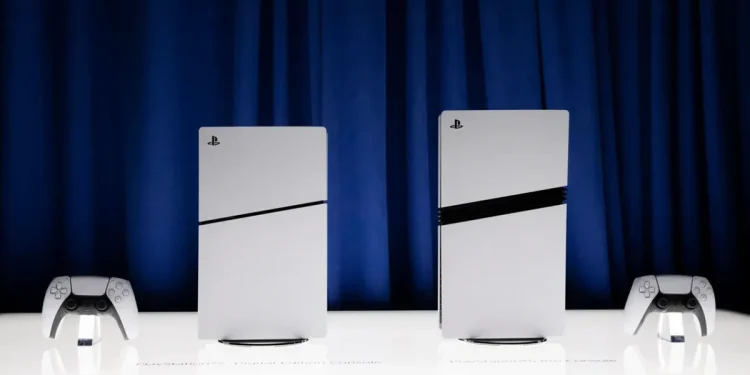The original PlayStation 5 launched in November 2020, kicking off the current generation of consoles. Three years later, Sony released the 2023 Slim model, which offered the same performance but slightly increased storage. Now, four years after the original debut, the PlayStation 5 Pro delivers the first major step forward.
The PS5 Pro, available Nov. 7 for $700 (£700, AU$1,200), delivers higher graphical fidelity and improved ray tracing. It runs games at smoother, higher frame rates than the original. It is the most powerful console on the market, but also the most expensive. The price does not include a vertical stand ($30) or Sony’s external disc drive ($80) if you want to play physical games.
Compared to a base PS5, the Pro costs $200–$300 more. Think of it like upgrading to a better graphics card on a gaming PC. To test whether it’s worth it, I compared the PS5 Pro with the standard PS5 and Slim using Horizon Zero Dawn Remastered, Spider-Man 2, and Ratchet & Clank: Rift Apart. Across all tests, I saw improved details without sacrificing smoothness. The PS5 Pro is the highest-performance console I have ever tested.
Design Updates: Familiar Yet Refined
The PS5 Pro borrows heavily from the Slim model. It keeps the four-panel design but the panels are slightly different in size. This means custom color panels for older models won’t fit the Pro. The external disc drive is the same as the Slim, clipping to the side.
Unlike previous models, the PS5 Pro comes only in a digital version. If you want disc support, you must buy the $80 external drive. Owners of a Slim who already have a drive can reuse it with the Pro.
The console is slightly bigger than the Slim but smaller than the original. New racing stripe-like fins between the top and bottom panels help with ventilation. It includes two USB-C ports on the front and two USB-A ports on the back. You can position it horizontally or vertically. Sony doubled internal storage to 2TB, and the Pro now supports Wi-Fi 7.
Performance Upgrades: Graphics, Ray Tracing, and AI
Three features define the PS5 Pro’s performance boost. First, the upgraded GPU has 67% more compute units and 28% faster memory than the standard PS5. This lets it render gameplay up to 45% faster.
Second, advanced ray tracing produces realistic reflections and lighting. Water, windows, and mirrors now display dynamic, lifelike visuals. PlayStation claims the rays can now process at double or even triple the speed of the current PS5.
Finally, AI upscaling—called PlayStation Spectral Super Resolution—enhances image clarity automatically. It sharpens games at higher resolutions without manual settings.
Gameplay: How Games Look on the PS5 Pro
On the standard PS5, most games offer two modes: Performance or Resolution. Performance lowers resolution to boost frame rates, usually around 60 fps, while Resolution mode targets 4K but caps frame rates at 30 fps.
The PS5 Pro allows games to run at full 4K while reaching 60 fps. Graphics are sharper, areas are more detailed, and gameplay remains smooth. Some titles, like EA Sports F1 24, advertise up to 8K or 120 fps, though I couldn’t test this due to hardware limitations.
In Horizon Zero Dawn Remastered, the Pro shows denser foliage and sharper textures. Spider-Man 2 features more NPC shadows, more vehicles, and a livelier cityscape. Ratchet & Clank: Rift Apart improves ray tracing, texture density, and long-distance focus. Even EA Sports F1 24 shows higher detail and clearer background text.
Not all games benefit immediately. Developers must patch updates for Pro enhancements. For example, Final Fantasy 7 Rebirth had excellent Pro updates, but I couldn’t test them during this review. At launch, Sony plans around 50 titles with PS5 Pro support, and more will follow.
Another new feature, Enhance Image Quality for PS4 Games, improves some older titles. For example, 2018’s Spider-Man looks sharper with this setting enabled. It’s similar to backward compatibility improvements on Xbox.
Should You Buy the PS5 Pro?
The PS5 Pro costs $700, plus $30 for a stand and $80 for the disc drive if needed. Despite the high price, it isn’t overpriced for what it offers.
If you already own a PS5, the base model performs surprisingly close to the Pro in many cases. You may want to wait or trade in your console for a deal. If you’re buying your first PS5, the Pro is worth the extra cost. You’ll future-proof your setup and enjoy top-tier performance for years.
Even with a potential PS6 in the next four years, the PS5 install base will remain strong. Upcoming titles will continue to support the platform. For anyone new to PlayStation or seeking maximum performance, the PS5 Pro is a solid investment.














